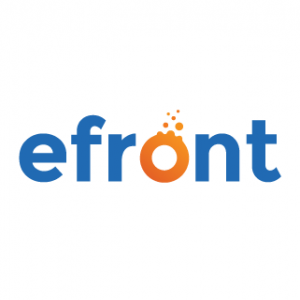How To Know When A Self-Hosted LMS Is The Best Fit For Your Enterprise
As an enterprise, you’re forced to make tough decisions every day. One of these is whether to build your online training on a cloud-based LMS or host your courses internally on a self-hosted solution.
But even if you’ve already chosen the cloud, it’s not too late to make the switch to an on-premise LMS. So, if any of the 6 warning signs below ring true for your enterprise, it’s time to make the responsible move and switch over to a self-hosted LMS. Let’s dive in.
1. You Have Sensitive Data
The scope of enterprise training is far-reaching. So, your corporate LMS probably captures information about employee, supplier and partner identities, learning goals, learning performance and more. If your training software integrates with your HR system, there’s an even larger flow of sensitive information to and from your LMS. And this needs to be protected.
With a self-hosted Learning Management System, you own the database and the data. This means that you get to control the level of security so that it aligns with enterprise policies and requirements. For example, you control reporting standards and data portability. You can also restrict access, choose the number of authentication steps, or implement an advanced encryption system that shuts the door on data-hungry hackers.
Finally, your enterprise will be in charge of LMS data security, data backups, and the disaster recovery process. So, if you decide that a self-hosted solution is for you, make sure that your technical team has the capacity and capability to take full ownership of its sensitive data.
2. Your Users Are In The European Union
Are you an enterprise located within the EU? Or, maybe you’re located outside of the EU, but offering training to employees, partners, customers or suppliers residing in it? Then the General Data Protection Regulation (GDPR) applies to you.
The GDPR aims to protect the data and privacy of individuals within the EU [1]. If your Learning Management System is in breach of GDPR policies, penalties can reach up to 4% of annual global turnover. Ouch. And guess what? Clouds are not exempt from GDPR enforcement.
With a self-hosted LMS, like TalentLMS, you get the peace of mind that your data is secure and safe from GDPR infringements. This is because you have sole ownership over your LMS, can control access to its data, and can even protect your LMS behind your firewall.
3. You Have Strict Branding Guidelines
For many enterprises, consistent branding is integral not only to marketing strategy but to employer branding, too. For example, your enterprise might want to integrate branding from a recent internal values-based campaign with its LMS User Interface. Perhaps a company values badge, like “relationships matter”, needs to be featured on the learning modules that it relates to.
This kind of branding integration and customization is possible with a self-hosted LMS like eFront. You’ll be able to modify various elements of the platform, such as your dashboard, as many times as you want. Of course, some cloud-based LMSs have customization features, but self-hosted solutions tend to offer far more room for flexibility.
4. Your Enterprise Is Growing And Changing
With a cloud-based LMS, the functionality you really want and need as your enterprise scales can be, well, limited. Maybe your Learning and Development strategy changes in such a way that you need to integrate your LMS with company webinars and social sharing platforms. Or, maybe you need more detailed reporting.
Growing involves frequent change, and change can be limited and costly with a cloud-based LMS, like TalentLMS. With your own on-site LMS, you can build adaptable learning platforms that support a growing number of courses and users, limited only by your own infrastructure, rather than someone else’s.
5. Your LMS Needs To Integrate With Other Systems
Let’s be honest. Your LMS isn’t the only software system your enterprise relies on. You’ve got HR systems, Project Management Systems, time tracking software, communication tools and a bunch of other applications. Running each of these independently just isn’t the kind of streamlined approach your enterprise needs.
But, switching to an on-premise LMS means that you can fully integrate your training software with the rest of your IT infrastructure. For example, new users that are added to your HR application can be automatically added to your LMS. Likewise, training completion and performance data can be scheduled to feed back into your HR system for KPI tracking.
This kind of integration doesn’t just create a seamless User Experience, it improves the enterprise’s level and detail of reporting, too.
6. Your Learners Use Various Browsers And Devices
Enterprises are often large and complex, and depending on your Bring Your Own Device (BYOD) policy, your employees may need to access training across a wide variety of devices and browsers. We’re talking desktops, laptops, tablets, iOS and Android mobile phones, you name it!
Often, with a cloud-based LMS, only a limited range of browsers and devices are supported. This means that some learners can’t access training if their mobile phone is android, or their home desktop uses an older browser. This excludes certain employees from the benefits of Just-In-Time (JIT) learning and mobile learning and holds the enterprise back in terms of achieving its learning objectives.
Of course, if your training extends to partners, suppliers and customers, too, then it’s wise to adopt a self-hosted LMS that supports your browser and device requirements.
Conclusion
If you found yourself biting your fingers as you read through these warning signs, it’s probably time to consider switching to a self-hosted Learning Management System. The only thing left to do is to find an LMS solution that’s trusted, and full of the features that will best meet your training needs.
References:


